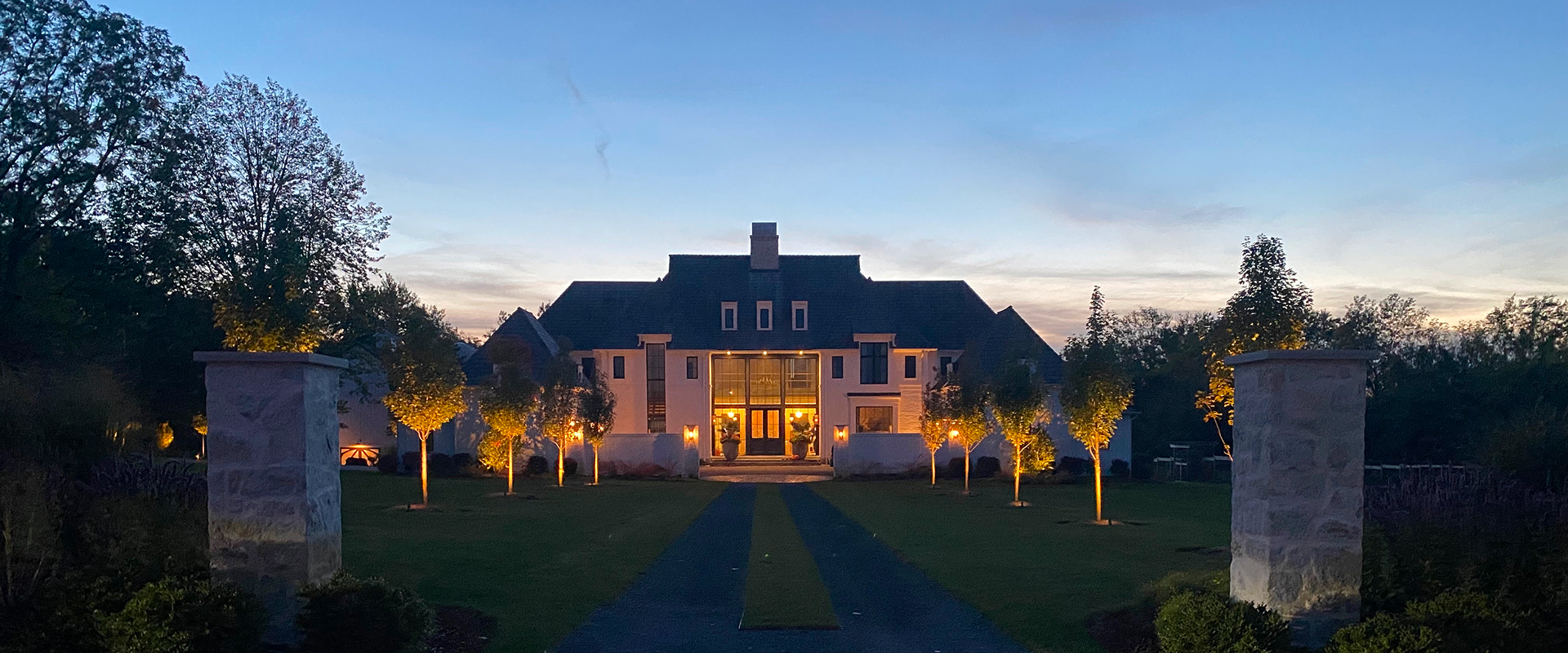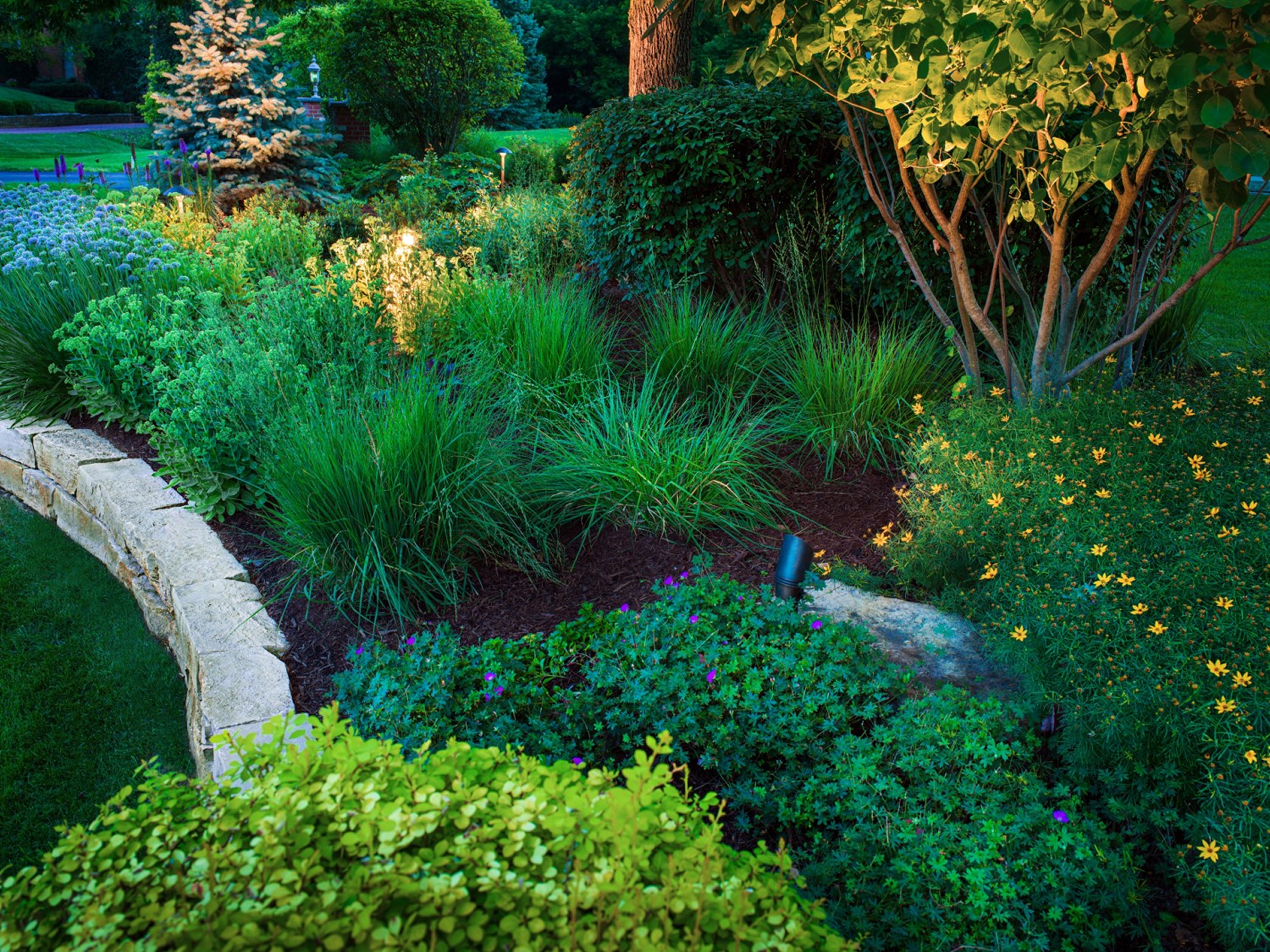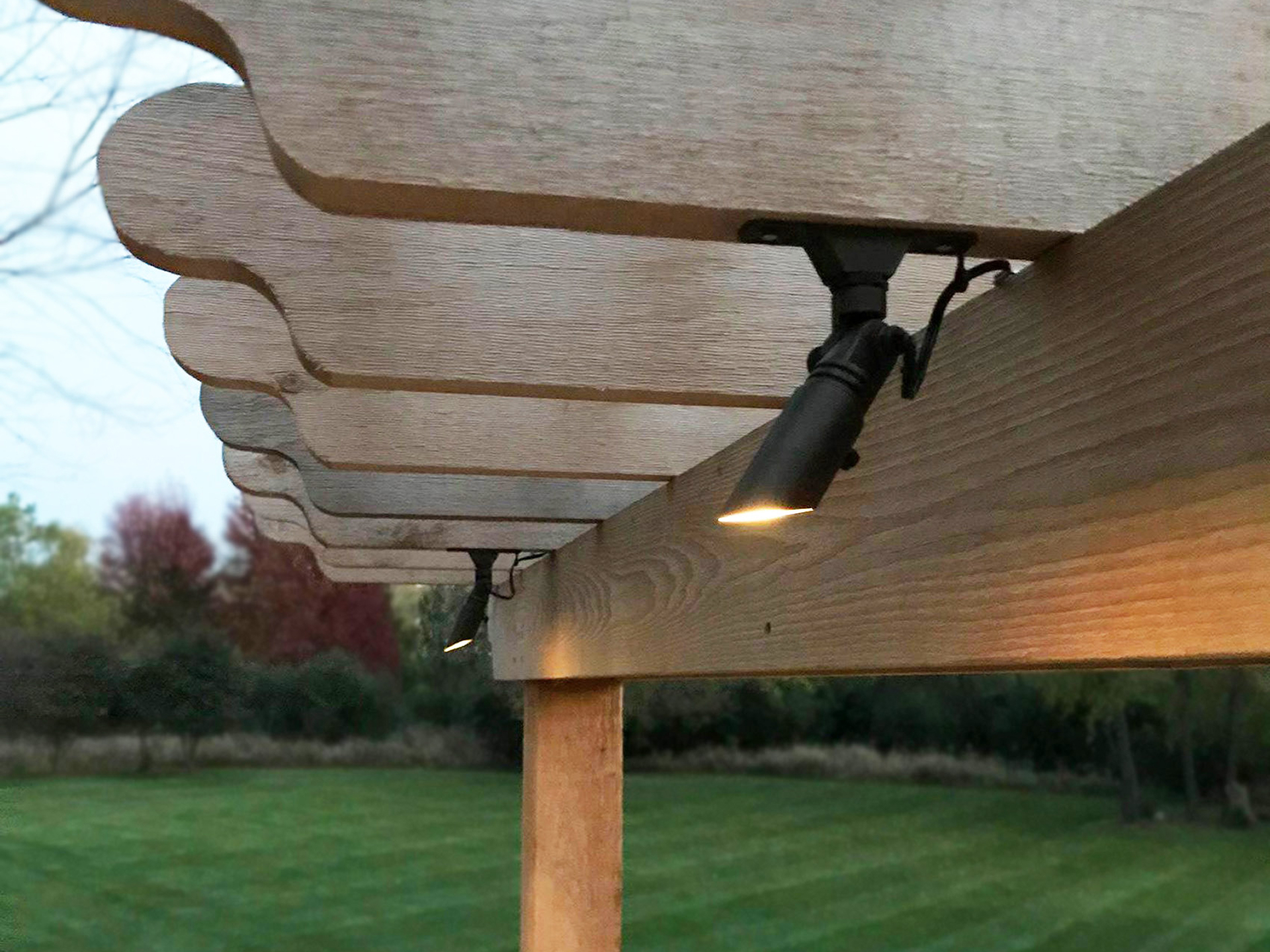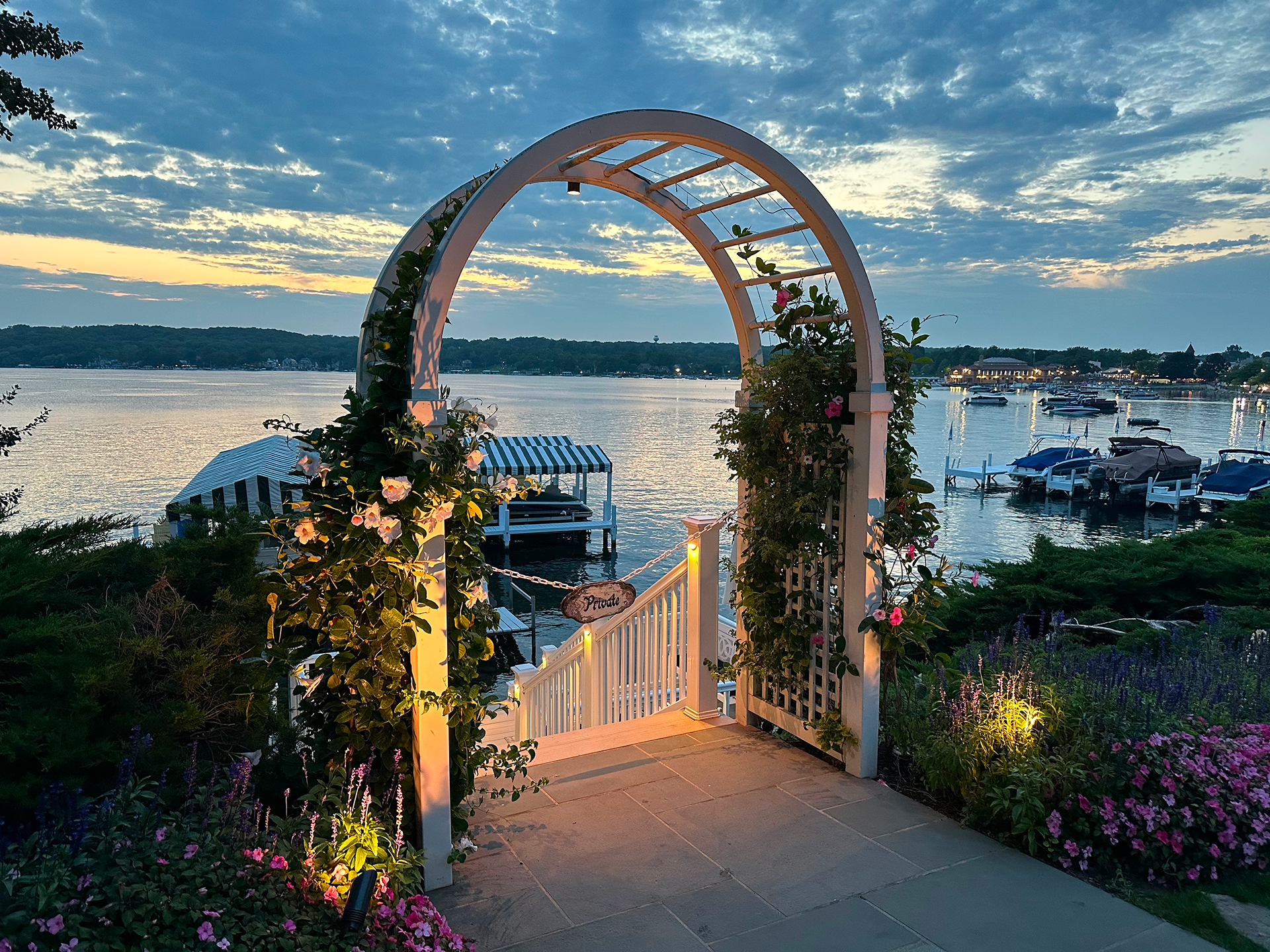Uplights & Downlights: Know the difference. Light with purpose.

So let’s take a closer look at the two most common spotlighting techniques—uplighting and downlighting—and how to use them to bring your outdoor space to life.
1. What Is Uplighting?
Uplighting is the art of aiming light upward to highlight, dramatize, and add dimension. It starts at ground level and transforms everything above it.
Use uplights when you want to:
- Draw attention to trees, columns, or architecture
- Emphasize height and texture
- Create strong contrast and visual drama
💡 Pro Tip: Uplighting works best when aimed at vertical surfaces or layered with other fixture types to avoid harsh shadows.

2. What Is Downlighting?
Downlighting mimics natural light, casting a soft glow from above. It’s the go-to for ambiance and safety—perfect for walkable areas and subtle highlights.
Use downlights when you want to:
- Light up paths, entries, or seating areas
- Create a moonlight effect from pergolas or eaves
- Add safety without sacrificing style
💡 Pro Tip: For a natural look, mount downlights in trees or structures and aim them through branches or beams to soften the effect.

3. When to Use What?
Here’s a quick cheat sheet to help you choose the right technique based on your lighting goal:
Use uplights when:
- You want bold drama or emphasis
- You’re highlighting trees, columns, or tall architecture
- You want to create visual shadows and depth
Use downlights when:
- You want a soft, natural glow
- You’re lighting functional areas like paths or patios
- You need glare control and subtle safety
4. Combine for Best Results
The most dynamic outdoor spaces use both techniques. For example:
- Use uplights to make your home façade pop
- Use downlights under eaves to fill in shadows and add safety
- Layer both to create visual depth and architectural balance
🌟 Pro Design Tip: Balance warm and cool color temps across uplights and downlights to keep the scene unified and intentional.

Styled to Impress. Built to Perform.
Whether you're a landscape contractor or a weekend project warrior, mastering uplights and downlights is the key to stunning results after dark. With Lite the Nite spotlights, you get the tools you need to create a space that’s safe, welcoming, and beautiful.
👉 Explore Our Landscape Lighting
📩 Or Contact Us for help picking the right fixture for your layout.
